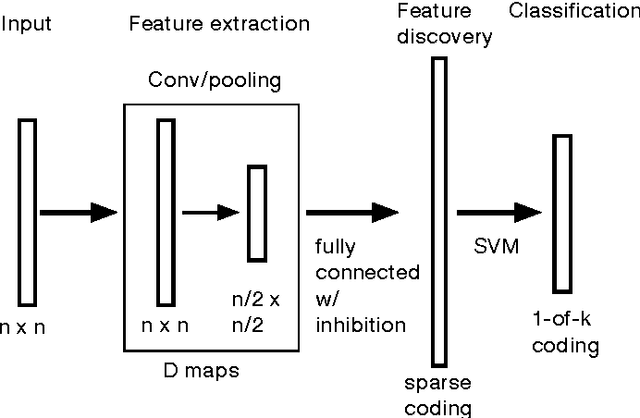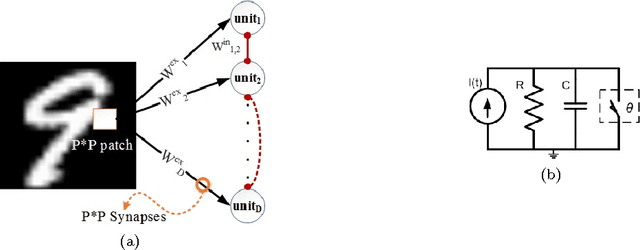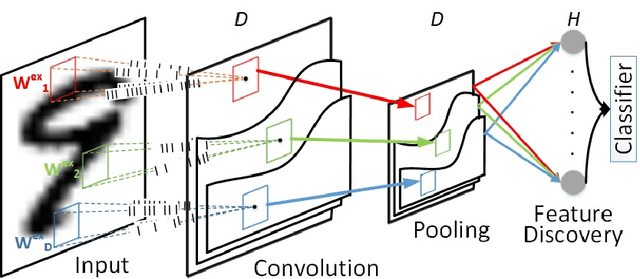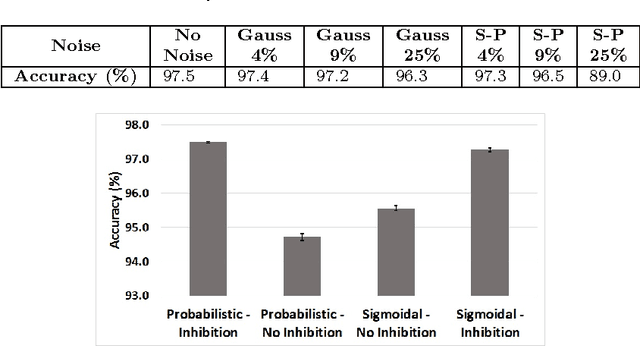Bio-Inspired Spiking Convolutional Neural Network using Layer-wise Sparse Coding and STDP Learning
Paper and Code
Jun 24, 2017



Hierarchical feature discovery using non-spiking convolutional neural networks (CNNs) has attracted much recent interest in machine learning and computer vision. However, it is still not well understood how to create a biologically plausible network of brain-like, spiking neurons with multi-layer, unsupervised learning. This paper explores a novel bio-inspired spiking CNN that is trained in a greedy, layer-wise fashion. The proposed network consists of a spiking convolutional-pooling layer followed by a feature discovery layer extracting independent visual features. Kernels for the convolutional layer are trained using local learning. The learning is implemented using a sparse, spiking auto-encoder representing primary visual features. The feature discovery layer extracts independent features by probabilistic, leaky integrate-and-fire (LIF) neurons that are sparsely active in response to stimuli. The layer of the probabilistic, LIF neurons implicitly provides lateral inhibitions to extract sparse and independent features. Experimental results show that the convolutional layer is stack-admissible, enabling it to support a multi-layer learning. The visual features obtained from the proposed probabilistic LIF neurons in the feature discovery layer are utilized for training a classifier. Classification results contribute to the independent and informative visual features extracted in a hierarchy of convolutional and feature discovery layers. The proposed model is evaluated on the MNIST digit dataset using clean and noisy images. The recognition performance for clean images is above 98%. The performance loss for recognizing the noisy images is in the range 0.1% to 8.5% depending on noise types and densities. This level of performance loss indicates that the network is robust to additive noise.
 Add to Chrome
Add to Chrome Add to Firefox
Add to Firefox Add to Edge
Add to Edge